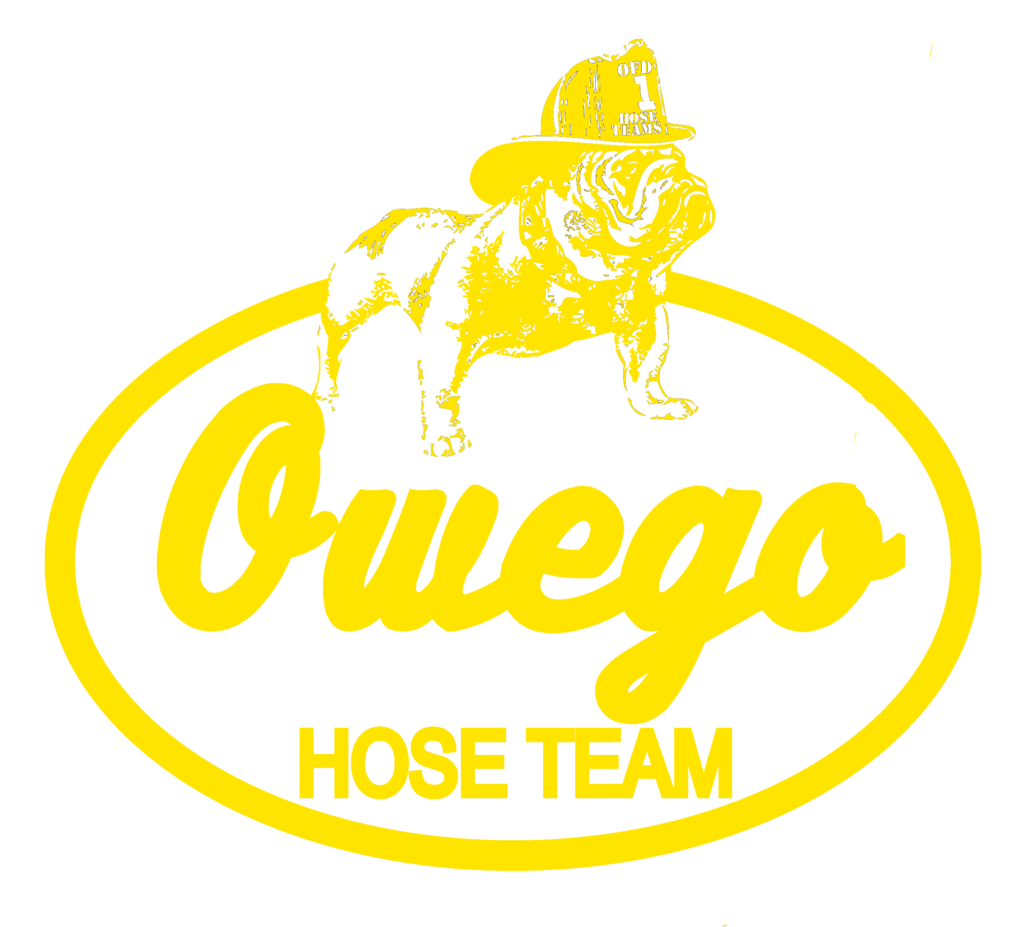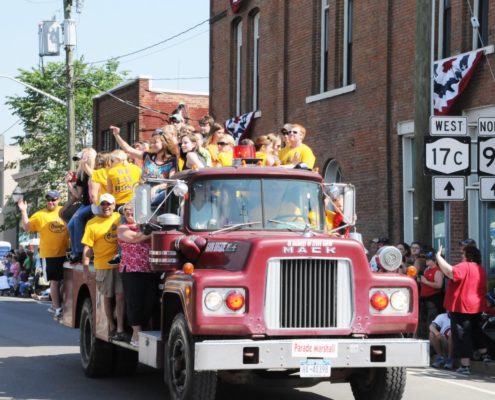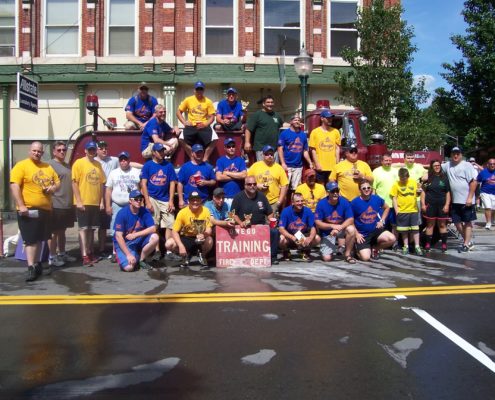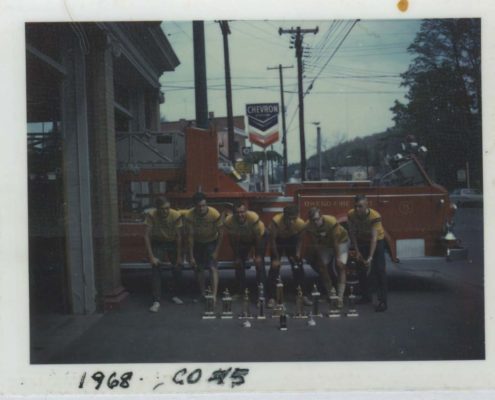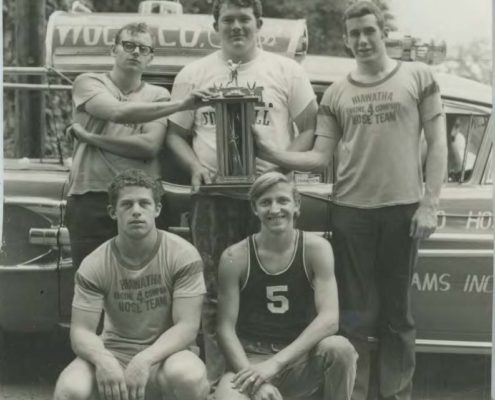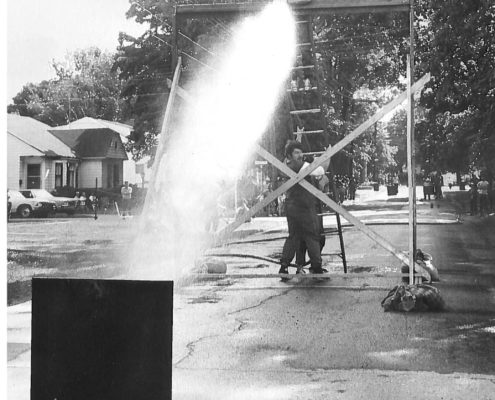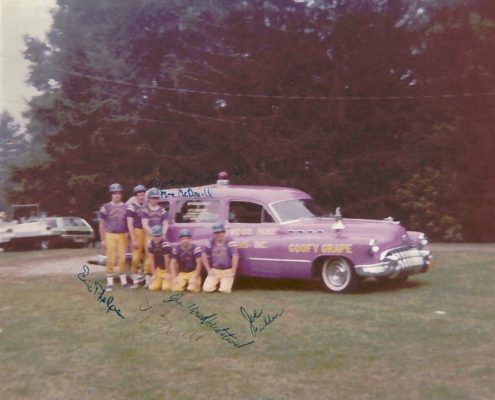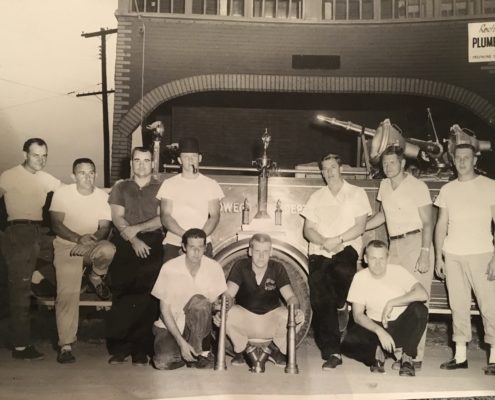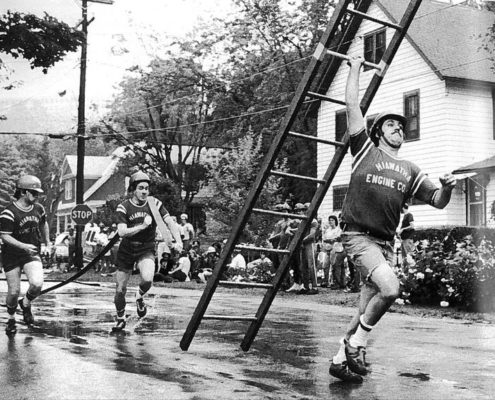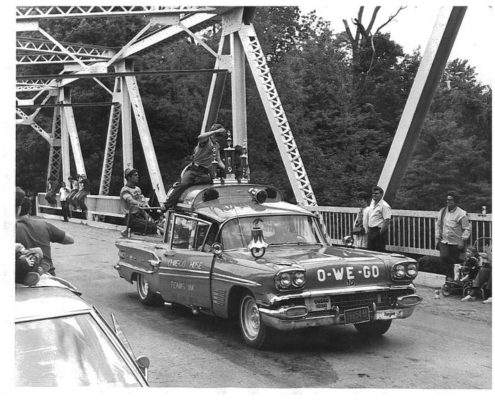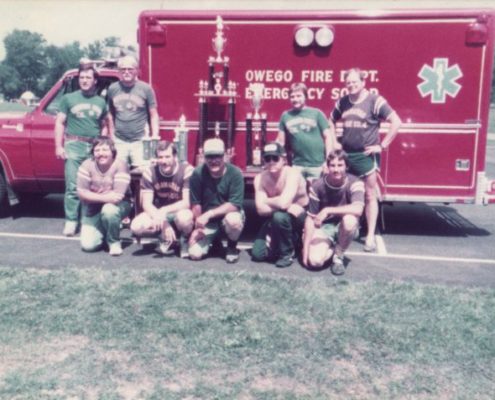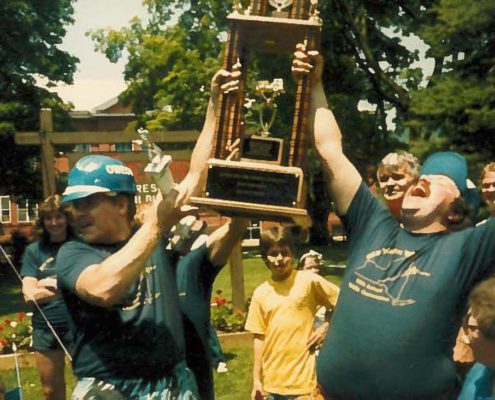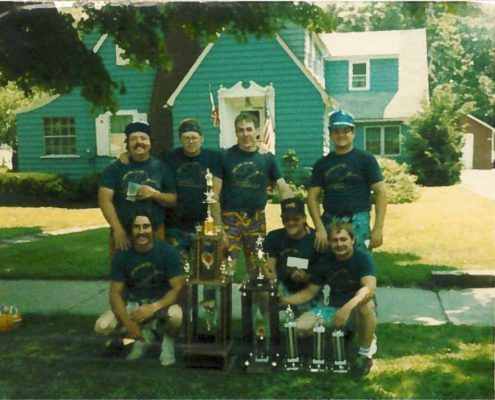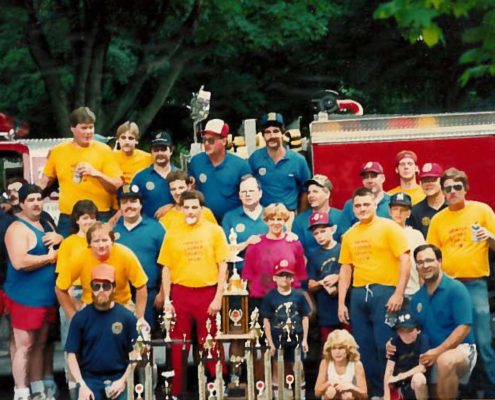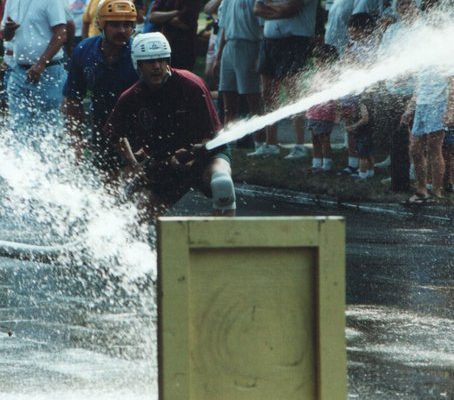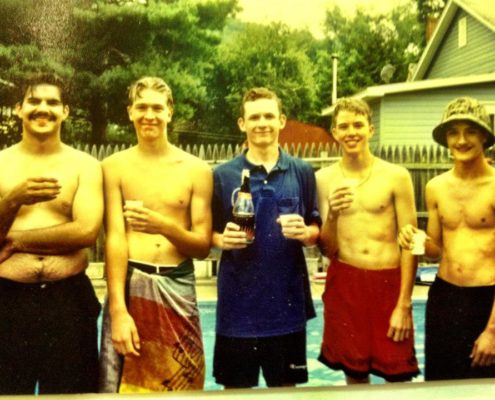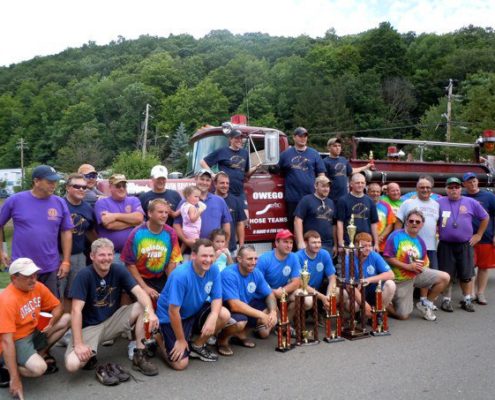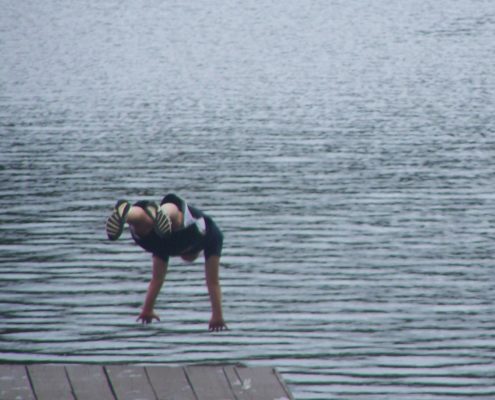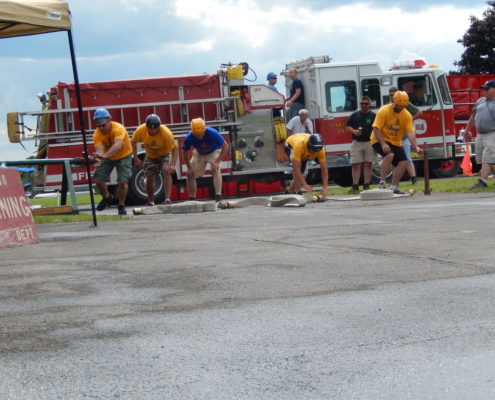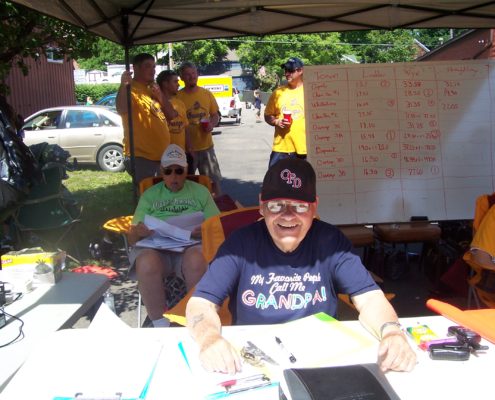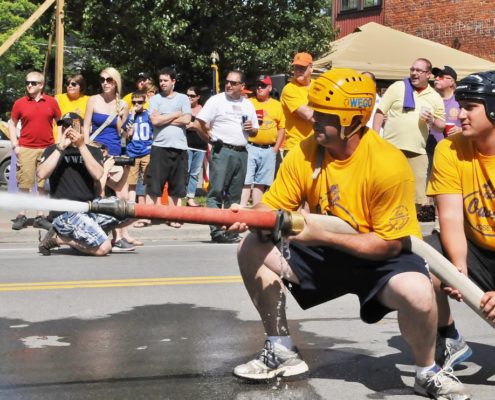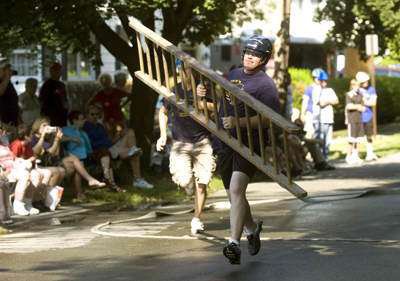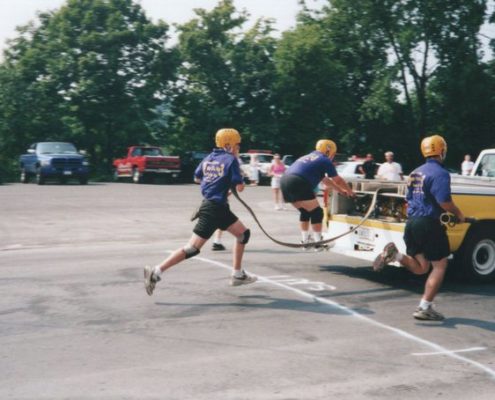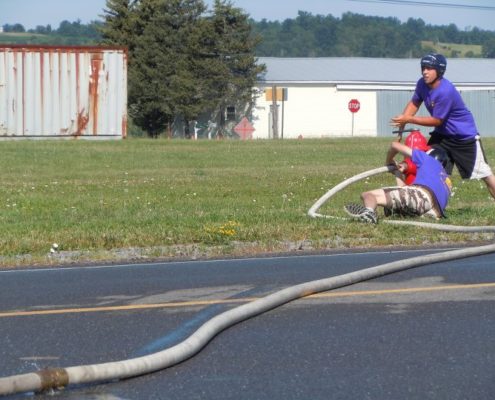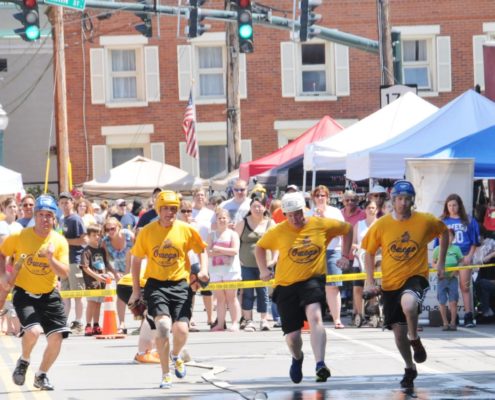Americans live about 80 years on average, right? Since I am a sportswriter, I tend to frame things in a sports context, thus I will put forth the contention that when we are 20 years-old, we have reached first base. At 40, we have hit a double, sixty is a triple and at 80, we cross home plate. Of course, we can “stay in the game” so to speak, and I have actually known a handful of people who have made it to 100, thus getting to first base again and going 2-for-2!
I just slid into third base earlier this year, and I have lived long enough to know that opinions and perspectives can take varying paths. There are some things about which we feel the same way throughout the entire course of our lives, and other things that mean so much to us at one point in our lives, and later, we could not care less about them. And some things – and for me, hose racing falls into this category – come full circle.
When I was a little guy, I looked at Owego’s hose racing teams with a mixture of awe, fascination and pride. My dad was Leo Lawrence, and I had heard the whispers that he was a Korean War vet, and had trained for the Navy’s elite Underwater Demolition Team. People told me that my dad was a two-way starter for Owego Free Academy’s football team in the 1940’s, and that he was a tough-as-nails center and linebacker.
My dad was one rugged guy, and someone told me that he and his buddies – Dick Franz, Ed Franz, Leon Halstead, Pete Porcari, Bob Thompson and Dick Hilker – had represented the Croton Hose #3 station at the 1959 Central New York Firemen’s Association (CNYFA) hose racing state championships, and had brought home the first-place trophy. When they talked about that achievement, they did so with obvious pride.
As a kid not quite old enough to play Little League baseball, I sometimes tagged along when my dad went to meetings at the #3’s firehouse on Talcott Street, which the legendary “Flat Rats” used as their home base. I watched some football on television and played on the pool table, and that state championship trophy – like my dad – looked about 10 feet tall.
As mentioned, I had also been to some parades and watched my dad and his friends ride in and walk alongside that famous “Purple People Eater.” The guys were cheered loudly, and while I applauded along with everyone else, I didn’t yet understand the community’s collective affection, gratitude and respect for volunteer firemen.
The late 1960’s were a time when my buddies and I would jump on our bicycles on weekends or summer mornings and find a baseball game at Nick Raftis Field, go fishing in the Owego Creek or bother girls. Our parents didn’t worry about us, and they knew that eventually we’d get hungry enough to find our way back home.
Sometimes, as I was pedaling from one adventure to another, I would see a bunch of guys practicing their hose racing drills, and I could see that some of my own friends were anxiously awaiting their opportunity to represent the “Flat Rats.” John Porcari made it clear that he wanted to follow his dad Pete into the brotherhood, as did the Franz brothers. I grew up with these guys, and while I felt a connection with all of them, I lived on Glenmary Drive and was therefore not an “official” Flat Rat. It was a strange sort of limbo – I lived 100 yards from the Flats, but I was an outsider.
As the years passed, the torch was passed as well. In the 1970’s, the Franz boys, the Fergusons, Louie Striley and other guys my age were coming into their own as hose racers, mentored by the new breed of leaders like Joe Fuller and Steve Gavin. I had found my own niche as a baseball player, and I was planning to play in college, so any thoughts I ever had about joining the #3’s and the hose teams went by the wayside. My dad didn’t really push me toward being a volunteer firefighter, and I knew I would be going off to college, so I didn’t pursue it. I did have a bit of envy for the guys who followed their dads into this tightly-knit fraternity, but it never came together for me to be a part of it. And, by the mid-70’s, I had become a member of Owego’s baseball “town team,” and given we drew big crowds on Sundays, I was getting my needs met from the standpoint of being recognized for being good at something and being a part of a team. As baseball players, we joked that some sports – like hose racing – were for guys that couldn’t hit a curve ball.
I went off to college for a few years, and relocated to California from 1979-‘81. When I came back to take a job at Cornell, I attended many of the Memorial Day parades in Owego, and I saw that the “new guys” were carrying on the hose racing tradition. Tommy and Larry Ferguson, Louie Striley, Dave Franz, Rick Hinchcliffe and Steve Tiffany were all involved, and some holdovers like Joe Fuller and Steve Gavin were still going strong.
I recall a Pennysaver story boasting that the hometown boys had hosted the 1987 CNYFA convention and had won yet another championship, this one made sweeter by the fact that they won it on home turf, and 2 years later, they won the trophy for the third time and were therefore allowed to retire it. That was another first for the Owego boys.
It was sometime in the 1980’s, soon after my return from California, that I happened to be in Owego when a big fire broke out. Like many others, I was drawn to it, and I saw some volunteer firefighters in action. They were focused, they were fearless, and the skills they had honed during the hose races were on full display. As I watched them, I acknowledged my own foolishness… Maybe these were guys that couldn’t hit a curveball, but the time they had invested in learning to fight fires sure seemed a lot more useful than any skill I had learned on a baseball field.
